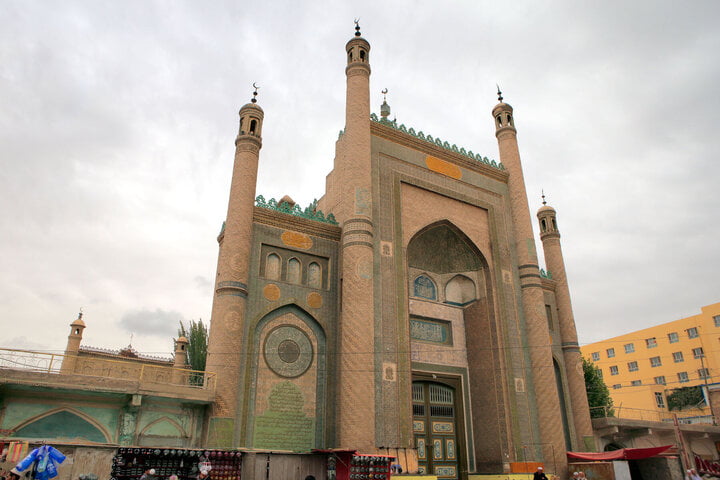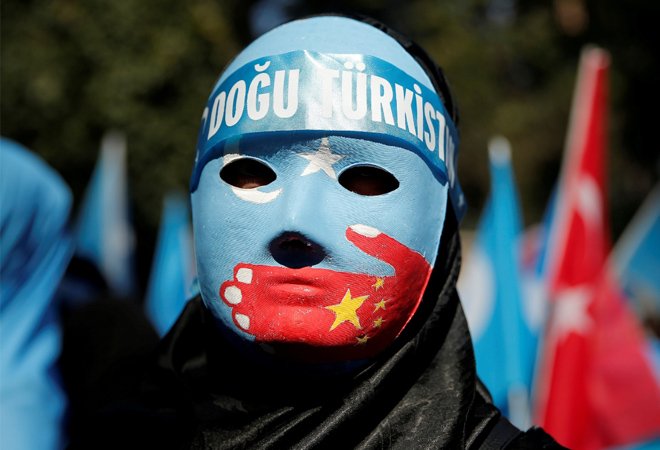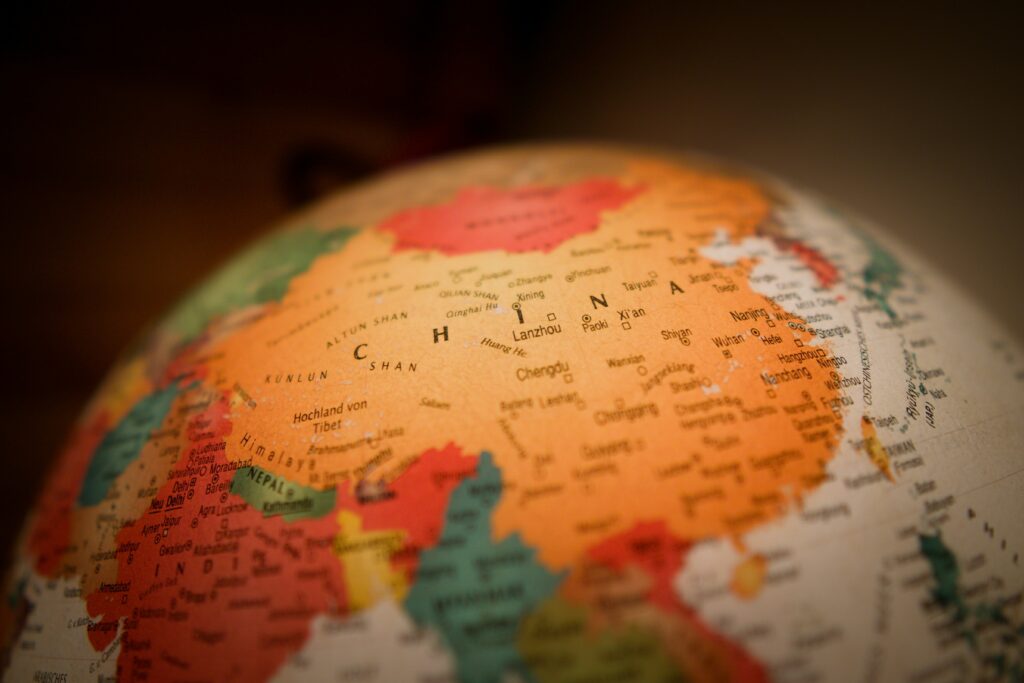Uyghurs are an ethnic community residing in the Xinjiang Province of the Republic of China. Uyghurs were migrants from present-day Mongolia in 840 CE, according to Chinese history. Other historians mention them as migrants from Turkey. However, there has been evidence from Chinese research that they were not migrants from Turkey. The ‘Turkish Migration’ history is a part of propaganda against China for the separatist movement of Uyghurs based on Islamic fundamentalism.
The main ancestors of Uyghurs were from Ouigour, who lived on the Mongolian Plateau during the Sui and Tang dynasties. To resist Turkish slavery and repression, the Ouigours joined with other tribal communities and formed a tribal alliance. In 1788 the then ruler of Ouigour requested the emperor to change their name to Uighur.

Religion And Culture
The Uyghurs of Xinjiang are Sunni Muslims. Large numbers of Han (ethnic Chinese) began moving into Xinjiang after establishing the autonomous region in the 1950s. The influx increased by the late 20th century the Han community constituted two-fifths of Xinjiang’s total population.
Uyghurs have developed a unique culture due to their long history and part as dealers and connectors between different civilizations. They’ve significantly benefitted Asian literature, drug, armature, music, song, and fine trades. Uyghurs have also historically shared numerous persuasions, the vestiges of which continue to influence their culture now. Presently, utmost Uyghurs identify as Muslim and exercise Sunni Islam with influences of Sufism.

Unmasking Xinjiang and Uyghur Falsities
It is not recently that the media have been celebrating the news of ” Violent Acts” by the Chinese government towards the Uyghurs. There have been numerous propaganda and falsified news relating to Chinese-Uyghur relations. All these allegations have been concocted to undermine the growth of the Chinese economy in the global market. The U.S. has been at the forefront of these falsifications and propaganda with the help of Western media.
Addressing the recent controversy surrounding Uyghur forced labor, it’s crucial to separate fact from fiction. Contrary to widespread claims, a debunking by the Global Times revealed a smear campaign against the Uyghur community.
The Western narrative, alleging the forced migration of 80,000 Uyghurs for labor in other provinces, falls apart under scrutiny. The reality stems from the underdeveloped southern region of Xinjiang, grappling with limited industrialization and job opportunities. Recognizing this challenge, the local government implemented plans to address unemployment, facilitating workforce mobility within Xinjiang and across provinces.
This initiative, rather than coercive, has been a catalyst for positive change. Over the past five years, more than 150,000 individuals from impoverished families have secured employment outside their region. Notably, many of them now earn an annual income of 45,000 Yuvan, equivalent to 512,282 Indian rupees. This effort has not only alleviated poverty but has also fostered harmonious lives for those who were previously struggling.

Government’s Vigorous Endeavors
Contrary to the negative narrative, data, and numbers reveal Xinjiang’s remarkable progress and development over the past seven decades under the leadership of the Communist Party of China (CPC). Far from a decline, the Uyghur population has experienced a steady increase. Between 2010 and 2018, the community’s population rose from 10.17 million to 12.72 million, marking an impressive increase of over 25%.
Claims that the Chinese government violates Uyghur Muslims’ religious freedom are either based on misinformation or driven by ulterior motives. Those making such assertions should either visit Xinjiang to witness the reality firsthand or critically scrutinize their motivations.
The recent smear campaign was about “re-education camps ” in Xinjiang. The vocational education and training centers set up in Xinjiang in agreement with laws are seminaries. They are the same as “De-radicalization Centers” or “the Desistance and Disengagement Programme (DDP)” in other nations. These are proactive approaches aiming to achieve de-radicalization and counterterrorism goals, preventing terrorism and religious intolerance at their source. They align with international counterterrorism papers, including the UN Global Counter-terrorism Strategy and Plan of Action to Combat Violent Unreasonably.
There has been no act of terrorism in the region for almost 6 years now. Apart from that, these centers have invested in nurturing sports and arts. They also avail amenities such as computer rooms and reading rooms for their academic growth. The centers cover trainees with public pension, and medical insurance and provide free health checkups. This is the treatment given to the trainees in the space.

Developments In The Region
Another key aspect of Xinjiang is that it has now 118 international road transport routes along the second railway line with Kazakhstan has been completed and is functioning now under the BRI project. This has channeled the way for 65000 China- Europe cargo trains until August 2023. The region is also well-connected with expressways and has 25 airports. This is more than any other province in China.
This connectivity has helped Xinjiang industries export their products to Europe and Asia by which there has been a huge progress in the domestic industries. Xinjiang’s raw coal production stood at 400 million tons in the year 2022 an increase of 25% from the previous year while the natural gas production in the year was 40 billion cubic meters with a 5% increase.

Forward Vision
The future holds more development projects in Xinjiang. The Xinjiang Akesu Integrated Urban Development Project’ is a clear-cut example of it. This proposed plan aims at urban development and economic prosperity in the regions of Akesu city and the Xinjiang Uyghur Autonomous Region. It focuses on sustainable infrastructure development in the regions.
The local government has also signed a brand new 25 tourism projects worth 28.77 billion yuan as an initiative to promote tourism in the region. Xinjiang received 72.704 million tourists between January and May of this year, an increase of 34.91 percent year over year, and generated 62.479 billion yuan in revenue from tourism, an increase of 74.86 percent year over year.
It is well understood that the autonomous region of Xinjiang and Uyghurs have never faced any torture or repression. Instead, considering the peculiarities of the region and community, China has been prosperous in maintaining a peaceful atmosphere and at the same time, cutting off any terrorist movements in the region.
With the Belt and Road Initiative, well-connected roadways, transnational railways, and air transportation facilities, Xinjiang will top the list of regions reaping numerous benefits that will aid China in its race to build a socialist state.
About the Author
Scaria Cherian

Scaria Cherian is currently pursuing his masters in Politics and International Relations from Mahatma Gandhi University, Kottayam. He is a political activist and vocal in social issues. His areas of interest include China’s strategic partnership with Latin America and West Asia.






